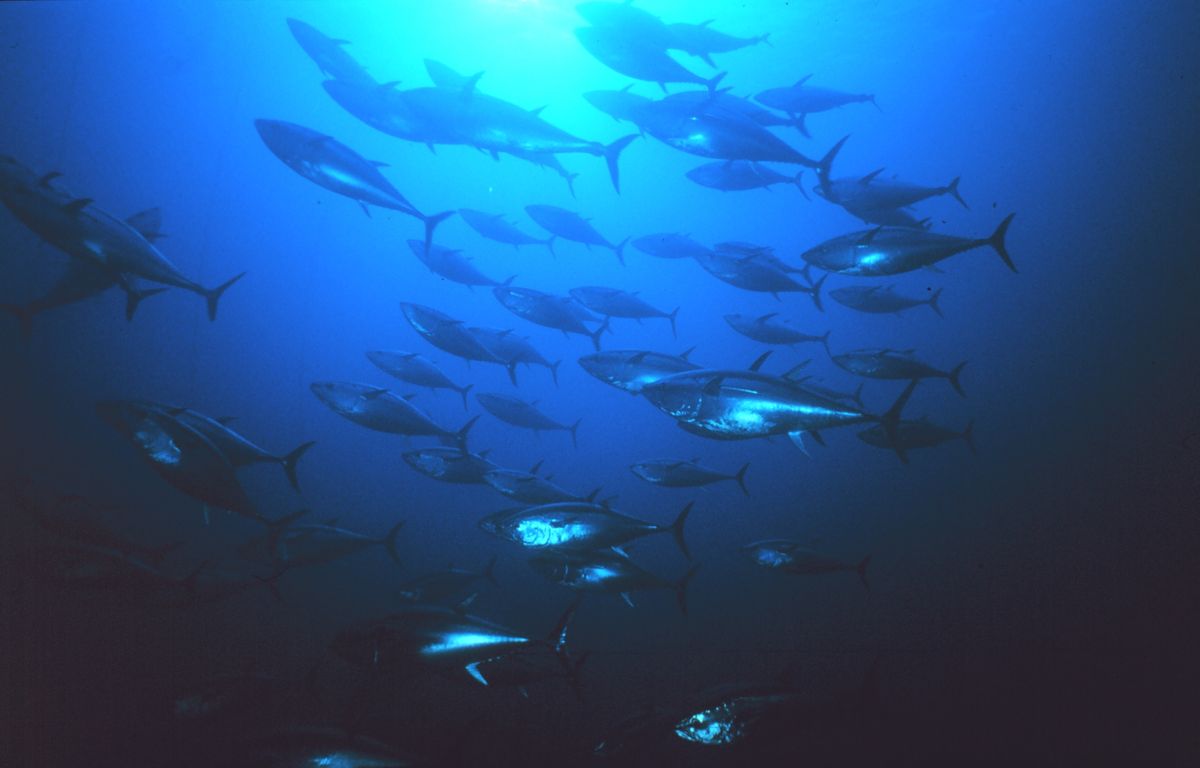Does Radioactive Tuna Mean Fukushima Was Worse than Expected?

Radioactive isotopes from Japan's Fukushima nuclear disaster turned up in bluefin tuna caught off California in August, a new study reports. The 15 fish that were tested contained 10 times the background levels of radioactive cesium, including a short-lived isotope that the fish must have absorbed while swimming in contaminated waters near Japan before migrating east across the Pacific.
The finding demonstrates that the nuclear accident last March had a pervasive and enduring impact on the world's interconnected oceans. Although the contamination in these particular tuna fell well below levels considered dangerous for consumption, the study authors said they were "surprised to see [contamination] at all."
This raises the question: Was the fallout of the Fukushima nuclear disaster worse than predicted?
Even 15 months out, it's hard to say. "A lot of questions remain," said Ken Buesseler, a marine chemist at the Woods Hole Oceanographic Institution. "One gaping question is how much radioactivity was released. Another is related to the continued leak at Fukushima and another is the level of contamination of seafood and sediments — whether that will change over time or continue for decades."
Assessing the impact of a disaster can be difficult to do without concrete numbers. Buesseler said scientists have yet to quantify the total amount of radionuclides, or radiation-emitting atoms, that were released into the environment during the accident. Estimates from various studies range from 13 Petabequerels (PBq) to as much as 60 PBq. For comparison, 85 PBq spewed into the environment during the Chernobyl accident, but whereas most of the output from the Chernobyl meltdown settled on dry land, around 80 percent of Fukushima's release is believed to have wound up in the Pacific. [Fukushima Nuclear Disaster: Timeline of Events]
And the damage to the oceans isn't done yet. "The reactors are still leaking," Buesseler told Life's Little Mysteries. "The release has been stable for several months, but there are still radionuclides being released on shore." As a consequence, fish off the coast of Japan are continuing to exhibit elevated levels of contamination, and some bottom-dweller species around Fukushima are still unsafe to eat. "The fact that the level of contamination is not going down, that they have fish that are above legal limits, is of concern," he said. "Why aren't the fish getting cleaner?"
Many of the samples baffle scientists. In Japan, scientists have observed a wide range of radionuclide concentrations in fish of a single species tested at the same time. "A lot of that variability is poorly understood and can't be predicted," Buesseler said. [10 Species Humans will Soon Drive Extinct]
Sign up for the Live Science daily newsletter now
Get the world’s most fascinating discoveries delivered straight to your inbox.
As demonstrated by the new findings, that lack of understanding includes bluefin tuna. Scientists thought the fish would have purged radionuclides from their bodies by the time they reached the U.S. Pacific coast, but they contained a clear "fingerprint" of Fukushima, an isotope called cesium-134 that decays in just a few years. Still, the tuna would have been safe to eat, and although scientists plan to continue monitoring contamination of seafood along the Pacific Coast, they aren't likely to find dangerous levels of radioactivity there.
Detectable radiation doesn't equal dangerous radiation, said Pal Andersson, environmental assessment analyst with the Swedish Radiation Safety Authority."One must remember that it is very easy to measure radioactivity," Andersson wrote in an email. "Even very small amounts are detectable, so you will detect concentrations which are too low to have any ecological impact or effects on human health."
The ecological impact of Fukushima is yet to be determined, but one superlative is certain. Chernobyl entailed a larger total release of radioactive materials than Fukushima, but the event was far removed from any oceans. And nuclear weapons testing dumped a lot of radionuclides into the seas, but the tests were intentional. Buesseler said: "This is the largest accidental release of radionuclides to the oceans ever."
Follow Natalie Wolchover on Twitter @nattyover. Follow Life's Little Mysteries on Twitter @llmysteries, then join us on Facebook.
Natalie Wolchover was a staff writer for Live Science from 2010 to 2012 and is currently a senior physics writer and editor for Quanta Magazine. She holds a bachelor's degree in physics from Tufts University and has studied physics at the University of California, Berkeley. Along with the staff of Quanta, Wolchover won the 2022 Pulitzer Prize for explanatory writing for her work on the building of the James Webb Space Telescope. Her work has also appeared in the The Best American Science and Nature Writing and The Best Writing on Mathematics, Nature, The New Yorker and Popular Science. She was the 2016 winner of the Evert Clark/Seth Payne Award, an annual prize for young science journalists, as well as the winner of the 2017 Science Communication Award for the American Institute of Physics.











